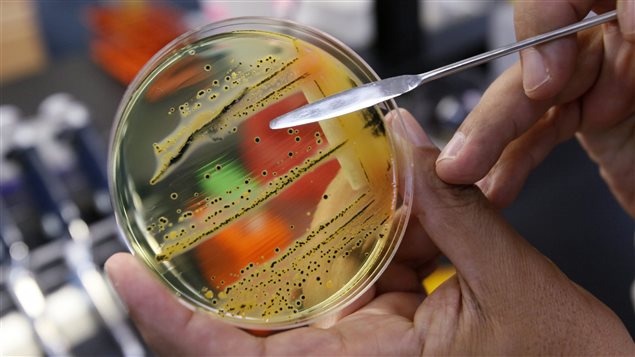The World Health Organization has released a list of 12 antibiotic-resistant bacteria that pose the greatest threat to human health to prompt governments to invest in research and development of new antibiotics.
These “priority pathogens” are resistant to multiple antibiotics and have built-in abilities to find new ways to resist treatment and can pass along genetic material that allows other bacteria to become drug-resistant as well, WHO says.
“Antibiotic resistance is growing, and we are fast running out of treatment options,” Dr. Marie-Paule Kieny, WHO’s Assistant Director-General for Health Systems and Innovation, told reporters. “If we leave it to market forces alone, the new antibiotics we most urgently need are not going to be developed in time.”
The WHO list is divided into three categories – critical, high and medium priority – according to the urgency of need for new antibiotics.
The most critical group of all includes multidrug resistant bacteria that pose a particular threat in hospitals, nursing homes, and among patients whose care requires devices such as ventilators and blood catheters, the United Nations health agency warns.
These include Acinetobacter, Pseudomonas and various Enterobacteriaceae (including Klebsiella, E. coli, Serratia, and Proteus). They can cause severe and often deadly infections such as bloodstream infections and pneumonia. In addition, they’ve become resistant even to the latest generation of antibiotics for treating multi-drug resistant bacteria, WHO says.
The high and medium priority categories contain other increasingly drug-resistant bacteria that cause more common diseases such as gonorrhoea and food poisoning caused by salmonella.
Tuberculosis was not included in the list because there are dedicated programs to develop treatments for the increasingly drug-resistant strains of TB, WHO says.
“New antibiotics targeting this priority list of pathogens will help to reduce deaths due to resistant infections around the world,” said Prof Evelina Tacconelli, Head of the Division of Infectious Diseases at the University of Tübingen in Germany and a major contributor to the development of the list. “Waiting any longer will cause further public health problems and dramatically impact on patient care.”
Priority 1: CRITICAL
- Acinetobacter baumannii, carbapenem-resistant
- Pseudomonas aeruginosa, carbapenem-resistant
- Enterobacteriaceae, carbapenem-resistant, ESBL-producing
Priority 2: HIGH
- Enterococcus faecium, vancomycin-resistant
- Staphylococcus aureus, methicillin-resistant, vancomycin-intermediate and resistant
- Helicobacter pylori, clarithromycin-resistant
- Campylobacter spp., fluoroquinolone-resistant
- Salmonellae, fluoroquinolone-resistant
- Neisseria gonorrhoeae, cephalosporin-resistant, fluoroquinolone-resistant
Priority 3: MEDIUM
- Streptococcus pneumoniae, penicillin-non-susceptible
- Haemophilus influenzae, ampicillin-resistant
- Shigella spp., fluoroquinolone-resistant







For reasons beyond our control, and for an undetermined period of time, our comment section is now closed. However, our social networks remain open to your contributions.